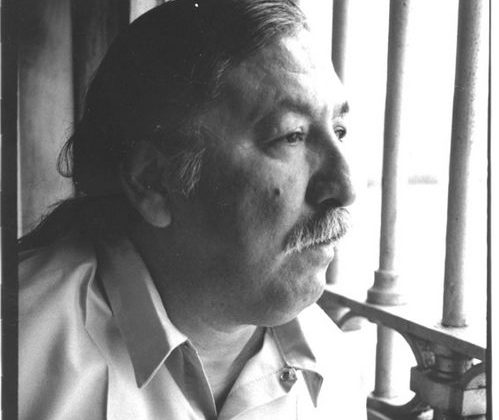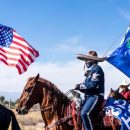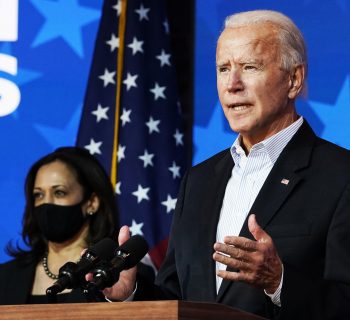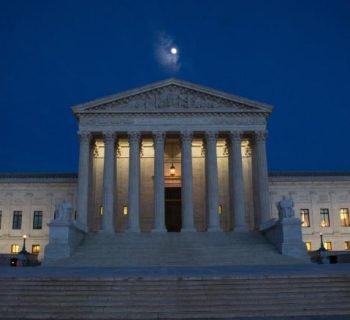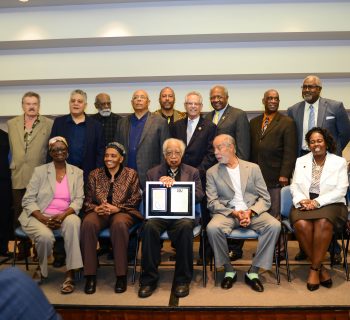By: Dr. Frank Javier Garcia Berumen, Exclusive for “El Magonista” ~ December 15, 2020
Photo credit: Solitary Watch
Native American activist Leonard Peltier has served 44 years in Federal Prison. In the 1977 trial, which was almost universally recognized as controversial, he was given two consecutive life sentences for the murder of two FBI agents (Ronald A. Williams and Jack R. Coler). The verdict was related to the June 26, 1975 shoot out at the Pine Ridge Reservation, South Dakota.
According to the facts, both FBI agents Williams and Coler entered the Ridge Reservation, in a place called the Jumping Bull, searching for a man named Jimmy Eagle. Eagle was wanted for questioning in relation to an assault and robbery of two ranch hands. Williams and Colter were driving in two separate unmarked cars (at about 11:50 a.m.). They were following a red pick-up truck that matched Eagle’s vehicle. They came under fire by several persons in higher ground. Some 125 bullet holes were found in the agent’s vehicles, many fired from a .223 Remington (5.56 mm) rifle. Both agents died some 10 minutes into the gunfire. [1] A Native American, Joe Stuntz was also killed by a bullet to the head by sniper fire. However, his death was never investigated.
Some 30 men, women, and children were present in the area. They were quickly surrounded by FBI agents, SWAT Team members, agents of the Bureau of Indian Affairs (BIA), and vigilantes of the authoritarian tribal leader.
Peltier was an active member of the American Indian Movement (AIM). He was an enrolled member of the Turtle Mountain Chippewa, and also has Dakota and Lakota ancestry.
After the shootout, three indigenous men were arrested for the shooting, Dino Butler and Bob Robideau (both members of the American Indian Movement); and Leonard Peltier, who was apprehended several months. All had been present at the Jumping Bull area. Peltier was extradited from Canada in December 1976. By that time, Butler and Robideau had been tried and acquitted, on self-defense in Cedar Rapids, Iowa, by a federal (on July 1976).
Peltier was tried in Fargo, North Dakota, and was convicted by a jury of the murders of Williams and Coler. In the trial, the jury was told that the two FBI agents had been killed by a close-range shot to their heads; and at that point, were defenseless after suffering several wounds. In the Robideau and Butler case, the jury had not been given that testimony. As a result, Peltier could not submit to the court a self-defense testimony, that could have arguably resulted in a different verdict. [2]
Several inconsistencies have been documented in the prosecution’s case. For example, several witnesses have recanted their statements; and have argued that their testimony were made under the duress of the FBI. One witness was also given immunity from prosecution for testifying against Peltier. There have also been an arc of inconsistency in the material evidence of the trial (i.e. Peltier did not drive a red pickup truck). [3]
The FBI also argued that an AR-15 was used to murder the two agents. However, several other similar weapons were in the area of the shootout. Some years later, a request was made under the Freedom and Information Act, which resulted in another examination of the FBI ballistics report that was used to convict Peltier. An impartial expert examined the firing pin that had been linked to the gun that killed both agents. The expert made the conclusion that the cartridge in the scene of the crime, did not come from the rifle that was linked to Peltier. [4] This piece of evidence negated one of the prosecution’s key pieces of evidence against Peltier. [5]
Other inconsistencies have been documented. For a complete overview of the Leonard Peltier case, this writer refers the reader to the article entitled “The Leonard Peltier Case” by Joseph Ezzo in the American Indian Law Review. [6] The article is available online.
Leonard Peltier is waiting for that elusive justice, that has too often been denied to indigenous people. Despite all the recent protests about racism and injustice; the media’s sudden acknowledgment of racism; and politicos making grand speeches about the subject; everybody has forgotten that indigenous peoples have always been, the ones who have had it the worst for the last 500 years.
Native American leaders such as Chief Pontiac, Crazy Horse, Sitting Bull, Geronimo or Cochise, have never been honored in school textbooks or the media, as “freedom fighters,” “patriots,” or the “conscience of the nation.” [7] The media has never televised their “lying in state,” funerals, or conducted interviews of their family, reservation; or the meaning of the lives of even the more contemporary indigenous leaders such as Russell Means, John Trudell, or Dennis Banks. Along with these, there are thousands of indigenous women who have fought and died for their people. They remain anonymous, only because this ethnocentric society has chosen to obliterate their memory and forget them.
Federal, state, and city governments have never issued a formal declaration of a Day of Mourning for indigenous or mestizo leaders; nor is there, a museum that honors their life and achievements. And neither has a present United States president, nor a former president, have ever made tearful and eloquent speeches about them.
Native people have always lived their lives in permanent poverty, have fought for their very existence for centuries, and died in a piercing silence of oblivion. They have been completely disregarded by Euro-Americans, and society-at-large. They exist as strangers in their own land. [8]
Leonard Peltier sits in his cell in the United States Penitentiary, in Coleman, Florida, in the silence of oblivion. In 1993, Peltier became eligible for parole. However, he is next scheduled for a parole hearing until July 2024. By then he will be 79 years of age. He was denied clemency by two liberal Presidents, Bill Clinton in 2001; and denied an application for clemency by President Barack Obama on January 18, 2017.
Nevertheless, the Peltier case has drawn support for clemency from a vast number of prominent leaders: Nelson Mandela, Rigoberta Menchu, Mother Theresa, Jesse Jackson, Archbishop Tutu, and Tenzin Gyatso (the 14th Dalai Lama), among many, many others. Among the government entities that have called for clemency are the Untied Nations Working Group on Indigenous Populations, the Office of the United Nations High Commissioner on Human Rights, the Belgian Parliament, and the the European Union, among others. Human rights organizations calling for Peltier’s clemency include The International Federation of Human Rights and Amnesty International.
In the United States, a diverse group of organizations have also called for clemency for Leonard Peltier. These include the National Lawyers Guild, the American Association of Jurists, the Committee of Concerned Scientists, and the Kennedy Memorial Center.
Regardless and in spite of these facts, and that the Leonard Peltier case has aroused the conscience of the world, this political prisoner remains in prison.
###
Dr. Frank Javier Garcia Berumen is an educator and writer. His books include: Latino Image Makers of Hollywood (McFarland & Co., Inc.); Edward R. Roybal: The Mexican American Struggle for Political Empowerment (Bilingual Education Services); and American Indian Image Makers of Hollywood (McFarland & Co., Inc.).
Copyrighted by Frank Garcia Berumen. All rights reserved. No duplication of this article in whatever form is permitted without the permission of the author.
[1] “FBI- The RESMURS Case. September 25, 2012.
[2] “Decision at Oglala.” Boston Herald. 1993. ProQuest 2947890662.
[3] “As Clinton Contemplates Clemency for Leonard Peltier, A Debate by the FBI and Defense Attorneys.” Democracy
Now, December 2000.
[4] Democracy Now. December 2000.
[5] Democracy Now. December 2000.
[6] Ezzo, Joseph (2013-2014). “The Leonard Peltier Case: An Argument for Clemency Based on the Norms of
International Human
Rights.” American Indian Law Review. 38: 35-39.
[7] Berumen, Frank Javier García. “Most Rushmore: A Relic of Manifest Destiny.” El Magonista, Volume 8, No. 27.
July 23, 2020.
[8] Berumen, Frank Javier García. “The Most Marginalized and Impoverished People in the Untied States and in the
Americas has always been and continues to be native Americans.” El Magonista, Volume 8, No 2. June 30, 2020.

